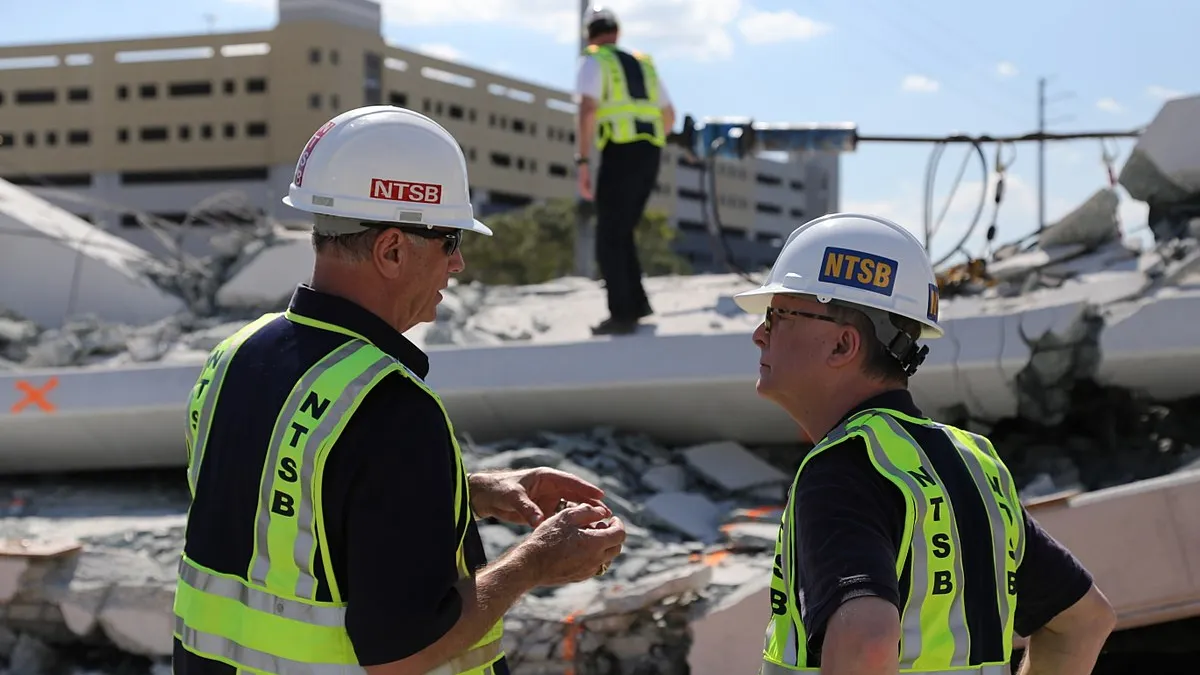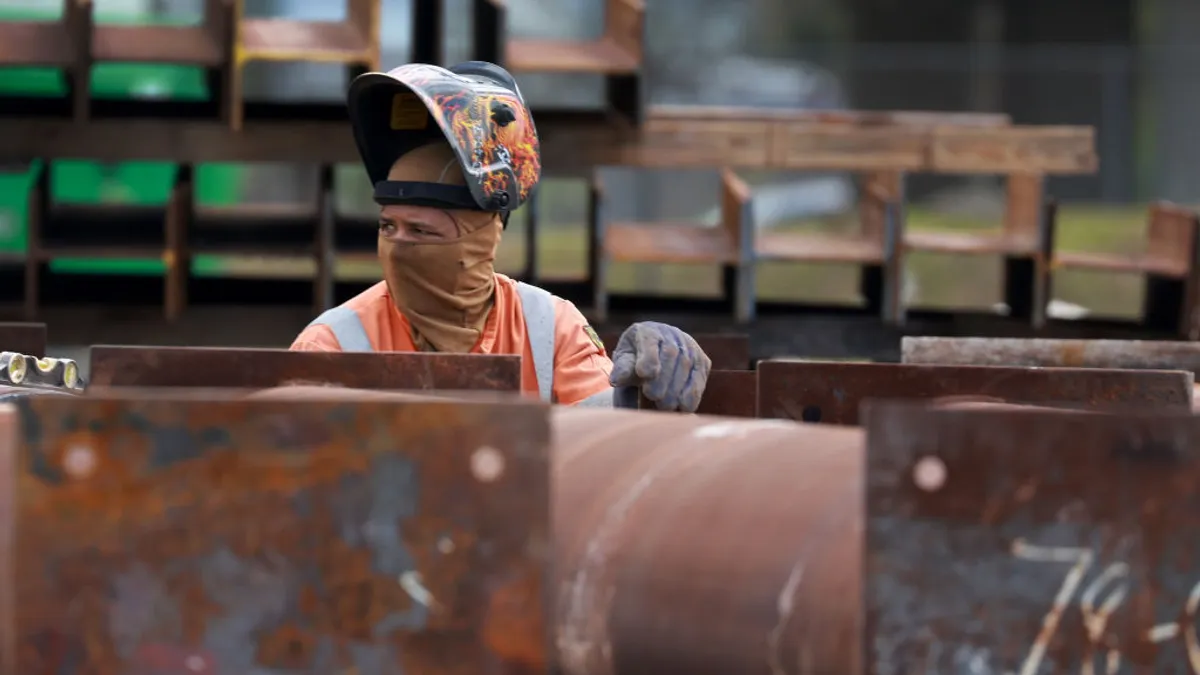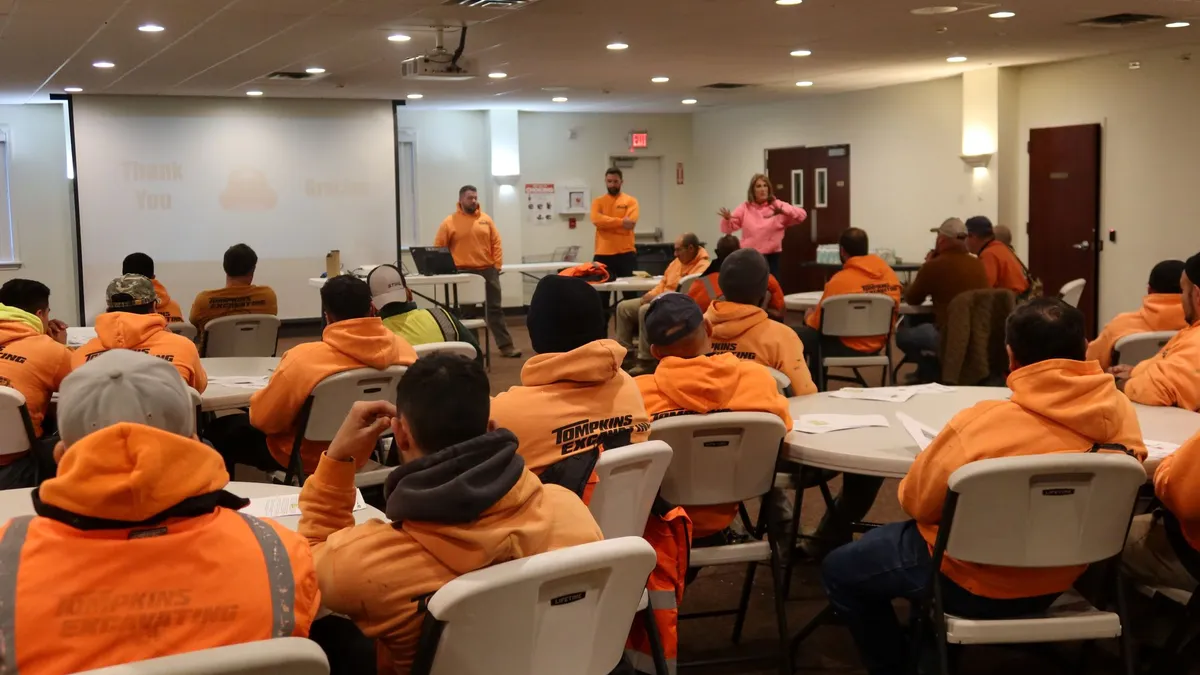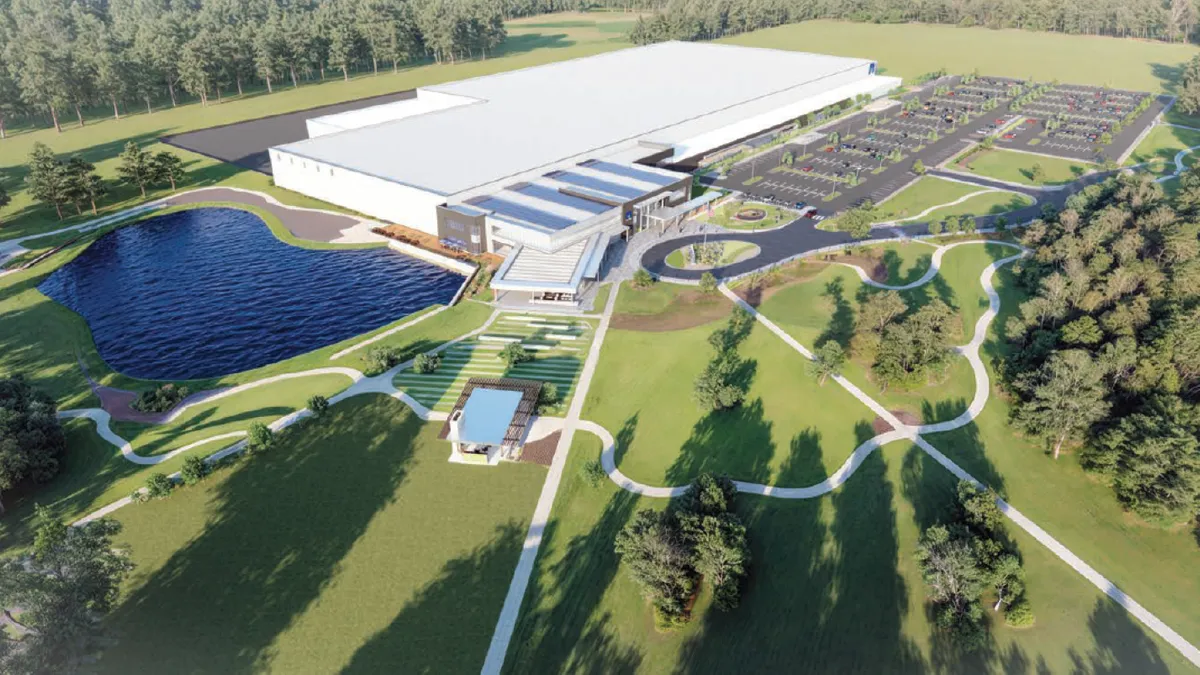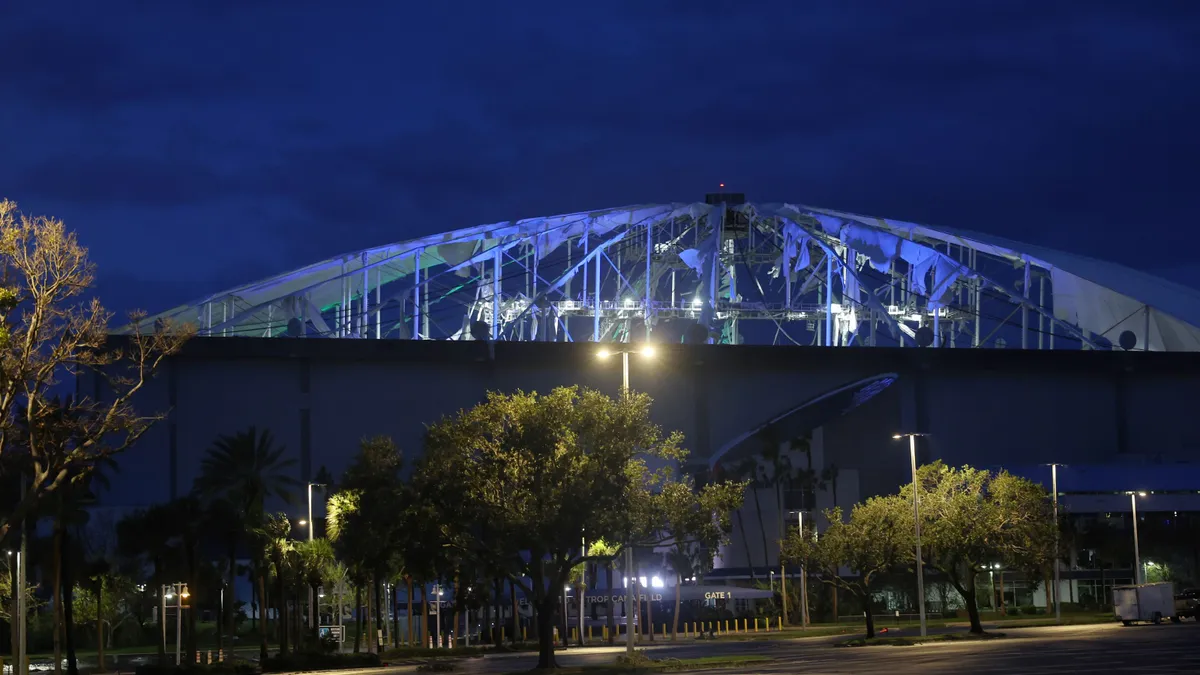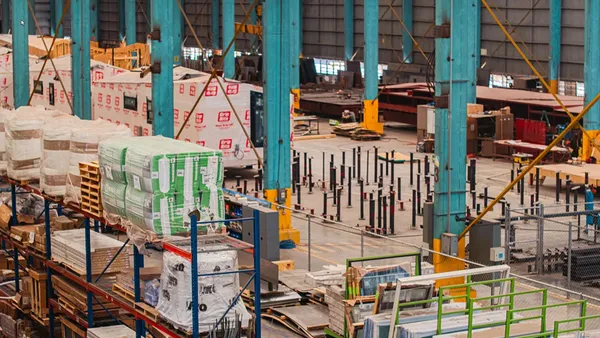Risk was the name of the game at the 2018 Construction SuperConference in Las Vegas, Nevada, last week. Arbitration lawyers spoke about the importance of mitigating risk by spotting "landmines" early in the preconstruction phase — when the contract is still being written.
“We want to put you in the mindset of a board room reviewing a claim,” said moderator Alan Sides, senior vice president of law firm David Pattillo & Associates. “Landmines that we have stepped on or that our clients have stepped on are good learning experiences to get you thinking about the warning signs, or sound bites, that would occur during a discussion in arbitration that you can actually think about in the preconstruction phases, early on, to mitigate that sort of risk."
Due diligence on deadline
For example, real estate investor Tuba Malinowski described how her firm, Stockbridge Developers, of which she is a managing director, purchased a multifamily property built in 1971 in Southern California through a competitive bid process, which provided 30 days to complete due diligence. As with every property, Stockbridge hired a third-party assessment team to check it out, but no red flags were found. “It had just undergone a $16 million renovation,” she said. “It looked beautiful.”
After two years, water intrusion issues came into play and residents complained and even began vacating the condos — a nightmare for a property owner, the managing director said. Malinowski had Phil Roy from Sides' firm come in and do a full property condition assessment, and he immediately noticed some slight discoloration in some areas and knew he had to begin “peeling the layers of the onion back,” he said, and start looking at the building from a “constructability” angle.
“You’ve got some issues here,” Roy, also a senior vice president, recalled telling Malinowski. His thorough review uncovered rust, damage to lumber supports and other “disturbing” features.
“So why does this happen?” Sides asked. “Why not start digging around during the bid or before you buy?” The answer, Malinowski and Roy concluded, was that there was simply not enough time in such a short bid-buying enterprise, and sellers often don't allow walls to be torn down and a full constructability assessment to take place while a property is for sale.
Taking over a property of any age and thus taking on the risk of a building’s constructability, whether it is by contractors doing renovations or owners buying new assets, should not be done unless a full property condition assessment and proper due diligence can be done in time, said Andy Howard, a partner at Alston & Bird.
Otherwise the risk is excessive. Instead of looking at equipment and giving an estimate on the life of windows and joints and other components, the best process should be to look at a building or building asset with a different set of optics, Roy added. “It’s not about checking off boxes, but looking at a building as a whole from a constructability standpoint with advanced, sophisticated equipment, by experts in the construction field.”
Inspection needs an extra look
Moving on, Sides brought up a case in which not enough oversight led to major problems during construction of a $125 million natural gas processing facility. Construction was well underway before the owner of the plant, Caithness Energy LLC, discovered defects in a large number of prefabricated piping elements during a nondisruptive inspection process. “This had huge scheduling impacts and the damages cost a lot of money,” Sides said, passing the baton to Caithness’ director of engineering and project management John Wanalista.
Under the microscope in this issue, Wanalista said, is the role of the owner, and the amount of oversight an owner can and should have on such a complicated project. “Don’t trust a contractor to do their own inspections” was the lesson learned in this case, he said.
“Contractors should do their own inspections and their own quality assurance and quality control, especially if they’ve assumed the risks of the parts such as prefabricated piping,” but from a dispute resolution or arbitration standpoint, the whole process is a lot smoother if owners take an active role. “Hire a third party for a comparatively small fee, and you’ll save big in the long run,” he said.
Contractors should be aware that owners on projects like this can and should state within the contract that they or third parties can show up at any point during construction, with reasonable notice, to do independent quality control, he concluded.
“Just because you can build various types of power plants all over the United States does not mean that you can build an LNG facility in Australia. The job was around $700 million, and when it got to the point it was going to cost $1.4 billion, that’s when [CH2M Hill] walked off.”
John Wanalista
Director, Engineering and Project Management at Caithness Energy
Tread lightly in new territory
Contractors working in new regions, or on new types of projects, or using new types of equipment, always take a gamble on risk, Sides went on. “New geography” risks are some of the most easily avoidable, he added, but pointed out some examples of ways these sort of landmines have gotten the best of construction firms.
A 50,000-square-foot data center built through a $25 million design-build contract, for example, ended up with a floating foundation that caused cracking and other serious issues, Sides pointed out. “In this particular situation, the general contractor had never worked in the Southeast,” he noted. Assuming knowledge that had helped it in past projects would carry it through for this one as well, the GC ignored the advice of a regional soil expert, he said.
As a contractor, if you come fired up and ready to work in an area in which you've never worked before, and with a good price, it can often rightfully be a red flag to owner, or a landmine, easily spotted and avoided in the risk review process, he added.
Another red flag is when contractors want to self-perform work they don’t specifically have experience in, Wanalista explained. For example, on a $55 million shipping warehouse project he was privy to, a GC decided to take over in-ocean piling work from one of its specialty subcontractors to save money. Things went drastically wrong, and the lesson learned, he said, was for owners to pump the brakes when a GC chooses to self-perform a task like that.
Wanalista also recalled a time when his prior firm, CH2M Hill, decided to take on a liquefied natural gas facility project in Australia. It was a first in many ways — his firm had never worked in the country, had never worked with its joint venture construction partner, and had never tackled an LNG project.
“Just because you can build various types of power plants all over the United States does not mean that you can build an LNG facility in Australia,” was the takeaway Wanalista shared. “The job was around $700 million, and when it got to the point it was going to cost $1.4 billion, that’s when [CH2M Hill] walked off.”
It sounds dramatic, he noted, but it actually happens all the time, because the right questions often aren’t being asked at the right time. Simple hesitations like, “Why exactly are we doing this?” can mean all the difference, he stressed. “Don’t jump at the opportunity to take on significant 'firsts,' it’s not worth it.”
You're not from around here, are you?
“New geography” can also be as simple as new relationships, or existing relationships in new locations, Sides said. Bringing a subcontractor or a joint venture partner in from another state, trying unfamiliar or sometimes desperate avenues for obtaining workforce, partnering with new firms — all of those dynamics can be whopping risks, Roy added.
“Foreign agents in a new geographical area tend to not be familiar with the local workforce or local subcontractors, so they bring them in from another state, for instance,” Roy continued. “That’s a landmine waiting to be stepped on.”
Different territories come with different regulations, protocols and dynamics. Even differing climates can affect projects delivery success in big ways, Howard said, naming the Bay Area in California as an example of a microclimate that’s vastly different than what can be expected just several hundred miles down the coast.
“As someone who is often brought in after a landmine has gone off, often left picking up the pieces and mitigating damage and establishing a recovery protocol, we see the signs from up front,” Howard said. “We’ve seen contractors come from the Southeast, for instance, into the Bay Area of California, and it presents a lot of challenges.”
Availability of subcontractors, availability of materials, weather and more factors within new regions can all throw a wrench in the plan once the job is underway, and it’s best to be well aware of all of those risks at the front end of the project rather than as you get into it and start having issues that need to be resolved retroactively.
“Most contractors consult firms like mine early on in a project for advice on the mechanics on lien laws, labor forms, statues of jurisdiction, stop payments, contractor licensing and more,” Howard continued. “It all drives risk allocation.”



